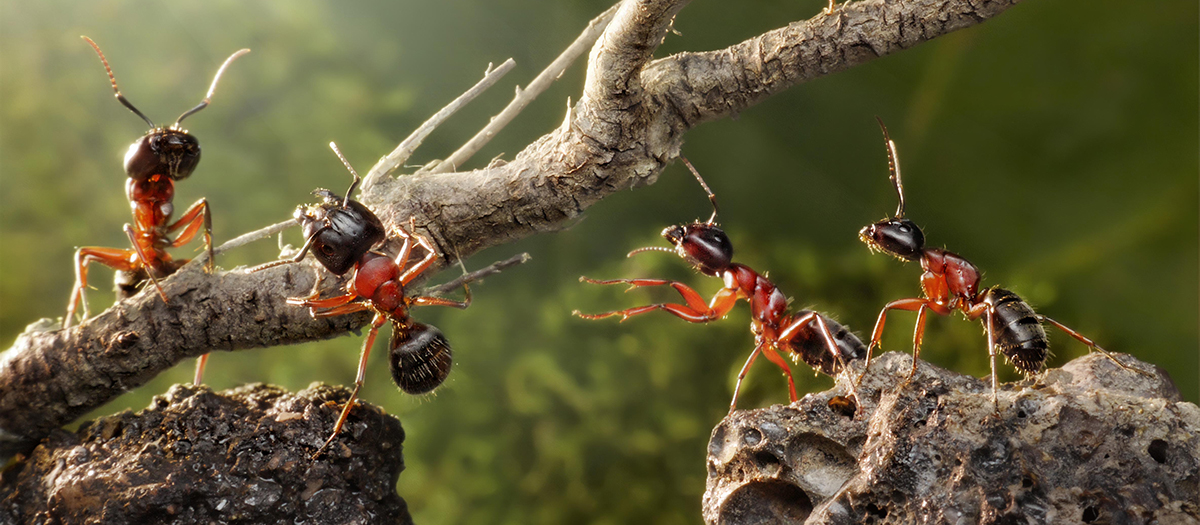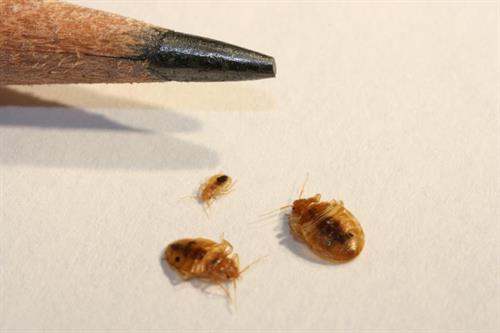
Integrated Pest Management (IPM) is the most sensible, economical and sustainable method of managing pests in homes, schools and other community environments where people are present. IPM integrates the use of cultural, physical, biological and chemical tools and minimizes economic, health and environmental risks.
The Public Health IPM Program raises public awareness and encourages vigilance, as historically and today both are important strategies in the prevention of public health pests, especially bed bugs and vector mosquitoes. The goal of the Public Health IPM Program is to develop and implement priority engaged research and extension programs on public health pests statewide.
The Public Health IPM Leadership Team, a multi-disciplinary group that has experts from diverse fields relevant to public health pests and pesticide health issues, will be directly involved in all aspects of the program, overseeing activities and providing expertise in public health related priorities to direct the efforts of Assistant in Extension for Public Health IPM.
Based on stakeholder needs, four emphasis areas within the program have been identified and prioritized. Activities in these emphasis areas are supported by national, regional and in-state IPM projects.
The first emphasis area of the program is public health IPM in housing, especially implementation of IPM in low-income elder/disabled housing facilities.
Pest problems and unnecessary pesticide exposure due to outdated and ineffective pest management practices in elder/disable housing facilities pose risks to the residents’ health. IPM programs have demonstrated significant reductions in both pesticide use and pest complaints in schools and other public buildings. IPM in elder/disabled facilities, hospitals, special needs schools, and other health care settings protects vulnerable and chemically sensitive populations.
In addition, collaborating with other scientists who work on public health pests, especially bed bugs, in community environments, we have secured a Western Region IPM Center grant (3/1/2017 – 9/30/2018) to develop effective bed bug outreach programs for diverse clientele in the West. We will continue to encourage and expand the collaborative framework for applied bed bug research and extension in the West.
Impacts:
Results over 2.5 years in five elderly/disabled public housing facilities showed significant reduction of German cockroaches (an average of 87% reduction) and common bed bugs (a 93% reduction). The clutter and sanitation scores at all sites were improved, as were housing staff and resident satisfaction with pest incidence and pest management practices.
Improved stakeholder awareness and knowledge regarding pests and IPM practices. Reduced risk of negative health impacts related to pest infestation and pesticide use. Improved quality of life for residents living in elderly/disabled housing, and staff working in the facilities. Networks we established improved information flow among residents, researchers, educators and communities.
The second emphasis area of the program is vector control, especially the integrated management of vector mosquitoes.
There are a number of disease-causing viruses, such as St. Louis encephalitis virus, West Nile virus, Dengue virus, chikungunya virus, and Zika virus, transmitted to people primarily through the bite of infected mosquitoes. Most recently, Zika was identified as a global health concern in 2015, when an outbreak in Brazil was linked to a dramatic increase in cases of babies born with microcephaly. We constantly produce and prepare outreach materials and extension publications on human disease-causing viruses vectored by mosquitoes, mosquito repellents, mosquitoes biology and management, etc. Our stakeholders have frequently requested trainings and workshops on mosquito biology and management. Funds and resources have been allocated to research on Zika and vector mosquitoes.

School IPM is another emphasis area of the program. AiE works closely with the Community IPM Leadership Team, which includes experts in structural and public health entomology, turf science, weed management, environmental horticulture, and IPM assessment. Currently the Community IPM Leadership Team mainly focuses on implementation of IPM in schools (funded by the USDA-NIFA Extension Implementation Program Area (EIP) institutional grant; Ellsworth and Fournier 2013 and 2017). We have successfully initiated contact with the Arizona School Facilities Board and the Arizona School Risk Retention Trust. To date, school IPM has been implemented in 7 school sites in 6 school districts (some schools are in the progress).
Impacts
Practicing IPM in schools reduces pest incidence by an average of 78% and pesticide use by 71%. In Arizona, pest incident reports have dropped by 85% for all School IPM programs combined. School districts partnering with the School IPM program during 2013 reported reduced pesticide inventories. An analysis of pest control products used in schools showed that all products labeled "Warning" and "Danger" were eliminated from 75% of districts partnering on the Indoor and Out program. Roving bed bug incidence was reduced by more than 75% as a result of adopting a bed bug IPM policy in one inner-city high school district.
My team has provided trainings to tribal stakeholders during our Tribal classes, trainings and outreach events covering a wide range of public health pest related topics including, but not limited to classes on: bed bugs, cockroaches, head lice, scabies, mosquitoes, ticks and related disease-causing pathogen risks of commensal rodents, venomous pests (bees, wasps, scorpions, and spiders), fleas, pesticide safety, food safety and wildlife management. All topics listed are common concerns for tribal communities. We also have covered IPM in different tribal environments, including schools, head starts, homes and medical facilities, housing, turf and landscape.
Our team is well positioned to address the tribal needs: (1) scientific expertise; (2) previous experience in IPM research and implementation; (3) existing relationships with key stakeholders that will be leveraged to achieve outcomes; (4) previous experience working with tribes in IPM projects, and admirable outcomes previously achieved.
We have strong connections to 14 tribes in Arizona and 13 tribes outside Arizona, all of which we provided assistance to in one form or another during 2019. We have established working relationships with key tribal collaborators and previous work communicating with and training tribal audiences using culturally sensitive and technologically practical methods. There are several important previously established relationships between UA partners and tribal environmental / public health professionals. These relationships contributed to our ability to leverage more funds in our EPA Border 2020 Grant application.
Award Grants and Contracts:
1. Li, S., D. H. Gouge, K. Walker, A. J. Fournier, S. Nair, M. Brophy, J. Weber, N. Dayoob. 03/01/2020 – 08/31/2021. Emergency Preparedness through Integrated Pest Management Education and Tribal Partnerships in Arizona. EPA Border 2020 Program. $99,974. Click HERE for more details.
2. Li, S., D.H. Gouge, K.R. Walker, K.C. Ernst, P. Rivadeneira, P.C. Ellsworth. 03/01/2019 – 2/28/2020. Public Health IPM Education in American Indian Communities. Cooperative Extension, University of Arizona. $31,895.